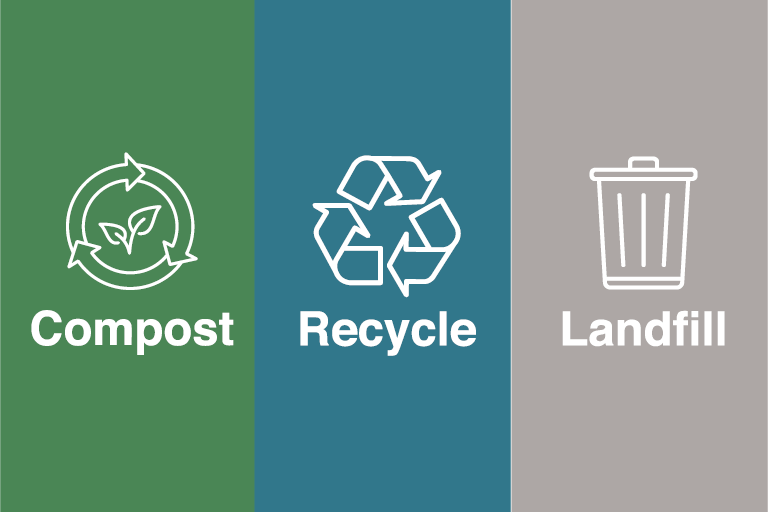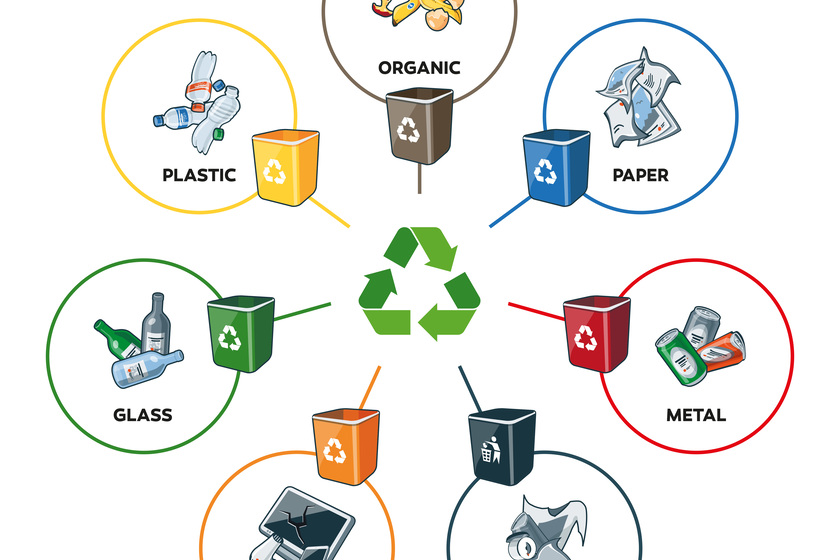Get Included with Recycling Lives Services for a Greener Future
Get Included with Recycling Lives Services for a Greener Future
Blog Article
Exploring Various Types of Waste in Modern Waste Management Solution
The contemporary landscape of waste administration includes browsing a complicated range of waste types, each needing specialized handling and disposal methods to reduce ecological influences. Local solid waste, harmful waste, digital waste, and natural waste each present unique obstacles and opportunities for source healing.
Community Strong Waste
Local solid waste, frequently referred to as family trash or garbage, incorporates a selection of discarded materials produced by household, industrial, and institutional sources within a town. This waste stream generally includes items such as product packaging, food scraps, yard trimmings, paper, plastics, textiles, and thrown out family products. The monitoring of community solid waste is a vital component of metropolitan planning and public health and wellness, necessitating reliable collection, transport, and disposal systems.
Effective waste monitoring systems are created to minimize ecological impact while taking full advantage of source healing. This usually entails a combination of methods consisting of recycling, composting, and landfilling. Recycling programs target products like paper, glass, metals, and certain plastics, diverting them from garbage dumps and reestablishing them right into the production cycle. Composting organic waste, such as food scraps and backyard trimmings, not just reduces landfill use yet also produces important dirt amendments.
Municipalities need to additionally resolve the financial and logistical obstacles connected with waste management. Carrying out pay-as-you-throw systems, boosting public awareness, and purchasing technology can substantially enhance waste diversion rates. By integrating these practices, towns can foster sustainable communities, lower greenhouse gas exhausts, and preserve natural deposits.
Hazardous Waste

Reliable dangerous waste management includes several important steps: recognition, treatment, segregation, and disposal. Identification requires the category of waste based on its unsafe homes. Segregation ensures that unsafe materials are saved independently from non-hazardous waste to avoid cross-contamination. Therapy methods, such as chemical neutralization, incineration, and stablizing, are used to minimize the poisoning, quantity, or mobility of the waste. Disposal options, including secure landfills and underground storage, are selected to guarantee long-lasting control.
Governing frameworks, such as the Resource Conservation and Healing Act (RCRA) in the United States, give guidelines and requirements for harmful waste administration. Adherence to these policies, combined with improvements in waste treatment innovations, is vital in minimizing the threats related to contaminated materials.
Electronic Waste
Digital waste, frequently described as e-waste, stands for a quickly expanding challenge in waste monitoring systems around the world. This kind of waste includes disposed of digital gadgets and equipment such as smartphones, computers, tvs, and other digital devices. The rapid rate of technical advancement, paired with lowering product life-spans and consumer demand for the most recent tools, has greatly enhanced the quantity of e-waste produced each year.
E-waste is especially problematic because of its complicated structure, commonly having harmful compounds like lead, mercury, and cadmium, which position significant ecological and health and wellness threats if not effectively managed. Alternatively, e-waste additionally consists of valuable materials such as gold, copper, and silver, which can be recouped and reused. The double nature of e-waste-- both hazardous and useful-- demands customized handling, reusing, and disposal procedures.
Effective e-waste management includes rigid regulatory structures, durable collection systems, and progressed reusing modern technologies. Public awareness and engagement are vital, as incorrect disposal practices, such as prohibited unloading and casual recycling, intensify environmental contamination and carcinogen. Enhancing e-waste monitoring methods is crucial for minimizing environmental influence and recouping useful resources in a progressively digital globe.

Organic Waste
Organic waste, consisting of kitchen area scraps, lawn resource trimmings, and agricultural residues, stands for a substantial portion of the worldwide waste stream. This kind of waste is eco-friendly, suggesting it can be broken down by microorganisms into easier natural compounds. Regardless of its capacity for all-natural disintegration, improper administration of natural waste can bring about unfavorable ecological impacts, consisting of the discharge of greenhouse gases such as methane, which add to environment change.
Efficient management of natural waste is vital for decreasing these ecological influences (recycling lives services). Composting is a widely taken on technique, changing natural waste into nutrient-rich garden compost that can enhance dirt health and wellness and agricultural productivity. In addition, anaerobic digestion is an arising technology that transforms natural waste right into biogas, an eco-friendly power source, and digestate, which can be utilized as fertilizer
Municipalities and waste administration entities have to implement durable organic waste collection and therapy programs to make the most of the benefits of these processes. Public education campaigns can additionally play a pivotal function in encouraging families and companies to different natural waste from various other sorts of waste. By focusing on the administration of organic waste, societies can minimize landfill usage, reduced greenhouse gas emissions, and produce useful results for farming usage.

Innovative Waste Management
In the realm of waste monitoring, ingenious methodologies are transforming exactly how societies handle their refuse, intending for sustainability and performance. One noticeable innovation is the implementation of clever waste containers furnished with sensing units that keep track of fill degrees and enhance collection paths.
Another noteworthy advancement is the fostering of waste-to-energy (WtE) technologies. By converting non-recyclable waste into usable energy via processes such as incineration and anaerobic food digestion, WtE reduces landfill worry and gives a renewable resource resource. In addition, innovations in chemical recycling enable the malfunction of complex plastics into their original monomers, making it possible for the creation of new, top notch plastic products.
Moreover, the circular economic situation model is gaining grip, emphasizing the design of products and systems that prioritize reusability and resource effectiveness. This all natural method encourages industries to decrease waste generation from the start. Through these cutting-edge approaches, modern waste management systems are not only attending to the immediate challenges of garbage disposal yet also leading the way for a more lasting future.
Verdict
A thorough look these up understanding of metropolitan solid waste, hazardous waste, digital waste, and natural waste, paired with the application of cutting-edge waste monitoring options, is crucial for mitigating environmental impacts. Incorporating technologies such as smart waste containers and waste-to-energy systems can boost performance and sustainability. Efficient waste management methods not only foster source recovery but also advertise public recognition and engagement, inevitably adding to the advancement of a circular economic situation.
The contemporary landscape visit homepage of waste administration entails navigating a complicated range of waste types, each needing specialized handling and disposal methods to minimize environmental effects. Local strong waste, unsafe waste, electronic waste, and organic waste each present distinctive obstacles and opportunities for source recovery.Electronic waste, frequently referred to as e-waste, represents a swiftly growing difficulty in waste management systems around the world. With these ingenious methods, modern waste management systems are not only addressing the immediate challenges of waste disposal however additionally leading the means for an extra lasting future.
A detailed understanding of municipal strong waste, unsafe waste, digital waste, and natural waste, coupled with the implementation of ingenious waste management solutions, is essential for reducing ecological impacts. (recycling lives services)
Report this page